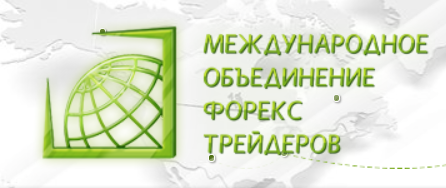Stock Market Predictions For 2025: What Is Coming Next Year?
.jpeg)
Mark to market essentially shows how much an item in question would go for if it were to be sold today and is an alternative to historical cost accounting, which maintains an asset’s value at the original purchase cost. At its core, mark to market is an accounting practice that requires companies to adjust the value of their assets and liabilities to reflect their current market prices. This approach contrasts with historical cost accounting, which records assets and liabilities at their original purchase prices.
Business
- Billions are being spent on AI development and the return expectations are high.
- As initially interpreted by companies and their auditors, the typically lesser sale value was used as the market value rather than the cash flow value.
- Market value refers to the value of the company based on what potential buyers would be willing to pay for it.
- Whether stock prices are heading up or down, there is always a reversal ahead.
- They are recorded at historic cost and then impaired as circumstances indicate.
- This standard provides a framework for measuring fair value and requires entities to disclose extensive information about their valuation techniques and inputs.
The information provided by mark to market accounting can be very valuable to investors and other stakeholders, but it should be taken within the context of the overall market and the company’s plans for those assets. At the end of every day, the broker will mark to market the value of the futures contract. If the total value of the contract increased, it’ll add cash to your account. If the value of the futures contract declines too much, you may fall below the margin requirements set by your broker, which will force you to liquidate your position or add cash to your account.
Create a free account to unlock this Template
In ensures that the fullerton markets review value of the assets and the liabilities in the financial statement show a transparent information. GAAP is a set of accounting principles and standards used by companies to prepare their financial statements. GAAP requires companies to use MTM accounting for financial instruments such as mark to market futures and derivatives contracts. In boom times, mark to market accounting could artificially inflate balance sheets. That could lead businesses to take on more risk than they should, given the backstop of their inflated assets.
Examples of Mark to Market
This is why many involve cash-only transactions or non-traceable forms of currency, making them harder to track. Markets vary widely for several reasons, including the kinds of products sold, location, duration, and size. The constituency of the customer base, size, legality, and other factors are equally influential. Aside from the two most common markets—physical and virtual—there are other kinds of markets where parties can gather to execute their transactions. For businesses, this approach may highlight areas where tax planning strategies are essential, especially when dealing with volatile markets. The previous year’s loss is written off from the first available gain, and if there is an excess gain over and above the loss, it is recorded in the books as Gain on Securities.
.jpeg)
In order to ensure you can settle that contract, your broker will require you to hold a certain amount of cash, typically a relatively small percentage of the contract’s value. For example, on day 2, the value of the futures increased by $0.5 ($10.5 – $10). By using the MTM method, Berkshire Hathaway provides a transparent report to their investors, reflecting that their stock portfolio significantly declined in value during the year. As illustrated by the previous years in the chart, the principle also works in reverse, with increases in the portfolio’s value resulting in reported profitability.
Thereafter, the trader will have to deposit additional funds to cover the potential loss resulting from the decline in the market price. Mark to margin is calculated based on the current market price of the financial instrument. And it is adjusted periodically to reflect changes in the market value. The process of mark-to-market involves comparing the asset’s original purchase price to its current market price.
Marking assets to market can be a straightforward process if you consider following the given steps. Mark to market, commonly known as MTM, is a term that is used in the world of finance and investment. If the banks were forced to mark their value down, it would have triggered the default clauses of their derivatives contracts. The contracts required coverage from credit default swaps insurance when the MBS value reached a certain level. It would have wiped out all Bill williams trader the largest banking institutions in the world.
Mark-to-market accounting use by Enron
We must protect pristine ecosystems, restore what has been damaged, develop sustainable livelihoods, and systematically document traditional knowledge in order to pass it on to future generations. Flickinger believes that Kroger is Albertsons’ best and final hope for staying alive. He doesn’t think there will be any other suitable buyers for the company because supermarket chains face so many challenges from so many competitors. The situation looks even worse in Boston, which is one of Albertsons’ weakest markets, Livingston said.
This interplay between fair value adjustments and cash flow can offer insights into the liquidity and operational efficiency of an entity. Overall, review global asset allocation mark to market is used to get a more accurate idea of what a company’s assets or liabilities are really worth today. It is an important concept that is used widely throughout finance, investing, and accounting. The hierarchy ranks the quality and reliability of information used to determine fair values, with level 1 inputs being the most reliable and level 3 inputs being the least reliable. A typical example of the latter is shares of a privately owned company the value of which is based on projected cash flows.
Mark to Market (MTM) accounting is a method of valuing assets and liabilities based on their current market price rather than historical cost. This approach provides a more accurate reflection of a company’s financial position, especially in industries with fluctuating market values like finance and investments. MTM accounting is essential for businesses looking to provide real-time financial information to stakeholders, but it also comes with risks, such as the potential for substantial losses during market downturns.
Вы должны быть авторизованы, чтобы оставить комментарий.



Об авторе